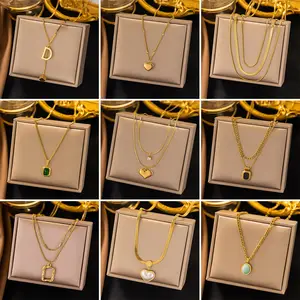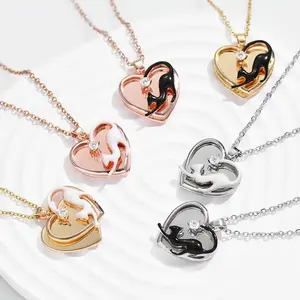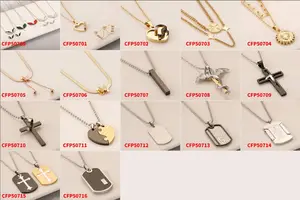(36 products available)






 Ready to Ship
Ready to Ship






































 Ready to Ship
Ready to Ship









































































































Bolivian jewelry materials create diverse and appealing forms of adornment for different target markets. The financial connection is tightly intertwined with the country's varied cultural traditions.
Known for its luster and quality, Bolivian silver jewelry is often handmade and intricately detailed. Earrings, necklaces, bracelets, and rings are common and are acknowledged globally. Working with local artisans promotes fair supply practices and ethical procurement of silver. Artisan groups can also fulfill bulk orders for retail chains.
Bolivia provides a selection of gold jewelry, including classic to contemporary designs. Gold necklaces and bracelets are popular with foreign buyers and provide reasonably priced gold adornments. Gold jewelry's small weight makes it ideal for long-haul business because it is easy to move and has a high resale value.
Some noteworthy traditional accessories include llama or alpaca wool scarves, hats, and gloves. Bolivian craftsmen hand-weave many of these items, adding value through traditional methods. Wool jewelry is gaining popularity as eco-friendly fashion rises in importance, appealing to conscientious customers.
Bead necklaces and bracelets made from stones like turquoise, lapis lazuli, and Bolivian opal are popular with tourists and supporters of the craft. Such adornments give the wearer a natural look and feel and are also environmentally friendly. Wholesale orders may benefit artisans by lowering costs and increasing output capacity.
Bolivian jewelry is notable for its vibrant colors, complex patterns, and incorporation of natural elements.
Bolivian jewelry is frequently made with Inca patterns and symbols that have been passed down through the generations. Gold and silver pieces are renowned for their detailed carvings that resemble original Inca geometrical shapes. Rings and pendants that reflect historical designs are especially appreciated by clients interested in culture.
Pre-Columbian and Incan cultures influence Bolivian jewelry design considerably. Popular motifs include condors, llamas, and other animals that hold significance in Andean mythology. Artisans also employ symbols representing strength, freedom, and nature to craft pieces with deep meaning. Such designs attract customers who value jewelry that tells a story beyond mere aesthetics.
Modern Bolivian jewelry artists are experimenting with materials and design forms despite the country's rich cultural heritage. They utilize alternative metals like stainless steel and titanium and introduce contemporary elements. These trends have also contributed to the growth of jewelry schools and workshops, furthering innovation. By fusing traditional techniques with modern aesthetics, the country offers diverse products that appeal to various client preferences. Urban youth and fashion-forward consumers are particularly drawn to minimalist silver rings and asymmetric gold earrings.
Bolivian artisans also offer personalization, such as engraving names or special dates. As the demand for distinctive experiences rises, this trend is becoming popular among lovers and individuals commemorating significant occasions. Retailers may differentiate themselves by offering bespoke services, forging a strong bond with clients.
Although primarily known for aesthetic purposes, Bolivian jewelry can serve functional roles in various professional settings.
Health professionals frequently wear simple jewelry, especially earrings and bracelets, to comply with strict hygiene rules. Surgical-grade stainless steel or bio-compatible materials are often used in such designs. Jewelry made in Bolivia can satisfy such needs while offering a distinctive cultural touch. Hospitals and medical facilities might also consider bulk orders for staff uniforms to enhance team identity.
In various sectors, such as hospitality, real estate, and startups, companies frequently employ lapel pins or cufflinks as part of their branding in Bolivian silver jewelry. Promotional trinkets for clients or staff can also include silver bracelets or beaded necklaces, looking wonderful while spreading brand awareness. Large orders are advantageous for both sides and are appropriate for any kind of business wishing to develop a unified appearance.
Bolivia is known for its music festivals and cultural events. During such events, attendees and performers wear colorful jewelry that embodies the spirit of Bolivian culture. Festivals organizers frequently use jewelry as costumes, either providing participants or encouraging attendees to utilize Bolivian-made items. Stand designs that reflect local culture and traditions also help event organizers and performers sell more tickets and improve attendee satisfaction.
A wide range of jewelry, from simple bracelets to elaborate silver masterpieces, appeals to tourists and may serve as effective advertising. Jewelry intended for souvenirs can provide substantial margins, specifically for items like alpaca wool goods or silver trinkets, which tourists highly value. Craft markets and online stores are thriving, especially for wholesale souvenir jewelry.
The tourism sector benefits from Bolivian jewelry as the country's rich cultural legacy is preserved. Tour guides may work with local craftsmen to design one-of-a-kind pieces that reflect local history and myths, adding a personal touch to the visitor experience. Such collaborations support local artists and provide visitors with meaningful souvenirs. Maintaining authentic craftsmanship also aids in preserving Bolivian culture for future generations.
In various sectors, including tourism, fashion, and event organizing, Bolivian jewelry plays a variety of essential roles.
This distinctive and vibrant jewelry reflects Bolivia's huge, varied heritage. Silver pieces often portray intricate designs inspired by Inca and Andean motifs. Local artisans custom-make much of this jewelry, passing traditional techniques down through generations. Many tourists learn about Bolivian history through the jewelry's intricate patterns and design.
Artisan-made Bolivian jewelry supports the local economy by completely employing people, particularly in rural regions. Jewelry production offers artisans a living wage and allows them to create and sell high-demand, world-famous goods. Market demand for unique, eco-friendly products drives the growth of the jewelry industry in Bolivia.
Given its quality and craftsmanship, silver jewelry from Bolivia is a sought-after investment in various international markets. Jewelry made of gold or valuable stones keeps its worth well through economic upheaval. Stones such as the Bolivian opal, renowned for its beauty and rarity, provide both aesthetic and monetary worth.
Jewelry serves several basic functions. For various markets, including high fashion, tourism, and corporate gifts, it offers economic and cultural value and practical use. Additionally, many functional pieces, such as silver cufflinks or engraved pendants, can be used practically, particularly in professional settings. Furthermore, in ceremonies, cultural activities, and conventional dress, jewelry also plays a significant social function.
Quality and care are essential elements that improve the lifetime and aesthetic value of Bolivian adornments.
The quality of Bolivian jewelry is greatly influenced by the materials used and the artisanship. The care that each artisan puts into their work results in stunning silver jewelry with complex designs. Gold adornments frequently exhibit detailed craftsmanship and cultural motifs. Globally renowned for its quality and distinctive characteristics, the Bolivian opal is a precious gemstone used in many pieces.
Additionally, jewelry is crafted from sustainable materials like alpaca wool and natural stones by skilled artisans adhering to traditional methods. Quality control procedures aid in preserving standards as customer demand rises. Customers looking for authentic, high-quality products are drawn to Bolivian jewelry more than mass-produced substitutes.
To prolong the beauty and integrity of Bolivian jewelry, maintenance is essential. Here are some tips:
Adopting preventive measures like routine checks will help ensure that jewelry pieces last longer and retain their cultural essence. Customers who are aware of this value not only enhance the quality of the items they buy but also respect the art and culture connected to Bolivian jewelry.
A1: The genuine artisanal techniques, national motifs, and incorporation of jewels like the Bolivian opal give Bolivian jewelry its own distinctive character.
A2: Yes, a lot of Bolivian companies provide custom choices, allowing consumers to personalize pieces using names, initials, or unique symbols.
A3: Silver, gold, alpaca wool, and natural stones like turquoise and lapis lazuli are frequently used in Bolivian jewelry.
A4: Keep stuff made of silver apart and store them in dry, dark locations to avoid tarnishing. Clean tourist destinations with gentle soap and avoid strong chemicals to preserve their beauty.
A5: Yes, many local artisans now employ methods that are good for the environment and use sustainably sourced materials to make jewelry.